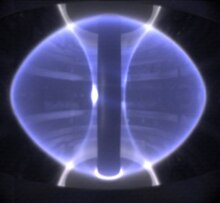Culham
| Culham | |
|---|---|
Abingdon | |
| Postcode district | OX14 |
| Dialling code | 01235 |
| Police | Thames Valley |
| Fire | Oxfordshire |
| Ambulance | South Central |
| UK Parliament | |
| Website | Culham Village, Oxfordshire |
Culham is a village and
Manor
The
The west wing of Culham Manor was built in the 15th century as a
Parish church
Several records suggest that Culham may have had a chapel since the 9th century. A parish church dedicated to
During the rebuilding, heraldic stained glass installed in the north transept in 1638 was transferred to a window in the north aisle of the new church. The tower has a ring of six bells, but currently for technical reasons it is not possible to ring them. Mears and Stainbank of the Whitechapel Bell Foundry cast or re-cast five of the bells in 1921, and cast the present tenor bell in 1926. St Paul's also has a Sanctus bell cast in 1774 by Edne Witts of Aldbourne, Wiltshire.[9] St Paul's parish is now part of the Benefice of Dorchester.[10]
In 1486 brothers Sir Humphrey and Thomas Stafford sought sanctuary in the church after they had fled from the newly crowned
Economic and social history



In 1416–22 the Abingdon Guild of the
In 1736 the
In 1844 the
Europa School, UK
In 1851
Culham Science Centre
In 1941
See also
- Crossings of the River Thames
- Locks on the River Thames
References
- Ordnance surveywebsite
- Neighbourhood Statistics. Office for National Statistics. Retrieved 30 July 2015.
- ^ a b c d e f g h i j Lobel, Mary 1962, pp. 27-39
- ^ Historic England. "Culham Manor (Grade II*) (1285637)". National Heritage List for England. Retrieved 9 June 2013.
- ^ Historic England. "Dovecote approximately 75 metres west of Culham Manor, the Green (Grade II*) (1059793)". National Heritage List for England. Retrieved 30 July 2015.
- ^ Historic England. "Sundial approximately 30 metres north east of Culham Manor, the Green (Grade II) (1059793)". National Heritage List for England. Retrieved 30 July 2015.
- ^ Sherwood & Pevsner 1974, p. 565.
- ^ Historic England. "Church of St Paul, The Green (Grade II) (1059792)". National Heritage List for England. Retrieved 30 July 2015.
- Central Council for Church Bell Ringers. Retrieved 30 July 2015.
- A Church Near You. Church of England. Archived from the originalon 4 March 2016. Retrieved 30 July 2015.
- ^ Historic England. "Culham House, High Street (Grade II) (1194530)". National Heritage List for England. Retrieved 30 July 2015.
- ^ Dodsworth 1976, p. 351.
- ^ Historic England. "Culham Old Bridge, the Burycroft (Grade II*) (1368838)". National Heritage List for England. Retrieved 30 July 2015.
- ^ Grubb, Sophie (18 September 2019). "Official closure consultation for Culham primary school". Oxford Mail. Retrieved 3 June 2020.
- ^ Historic England. "Schola Europaea (Grade II) (1194452)". National Heritage List for England. Retrieved 30 July 2015.
- ^ "Culham Institute". Archived from the original on 7 February 2005. Retrieved 19 January 2005.
- ^ "Home". Europa School UK. Retrieved 7 March 2020.
- ^ "Report - - ROC Post, Culham, Oxfordshire. 30th August, 2011". 28DaysLater.co.uk. Retrieved 3 December 2016.
- ^ Culham Science Centre
- ^ "Culham Centre for Fusion Energy". Archived from the original on 16 November 2018. Retrieved 16 November 2018.
Sources
- Dodsworth, IC (1976). "The Chawley Brick and Tile Works, Cumnor". Oxoniensia. XLI. ISSN 0308-5562.
- Lobel, Mary D, ed. (1962). A History of the County of Oxford. Victoria County History. Vol. 7: Thame and Dorchester Hundreds. London: Oxford University Press for the Institute of Historical Research. pp. 27–39.
- Sherwood, Jennifer; ISBN 0-14-071045-0.
